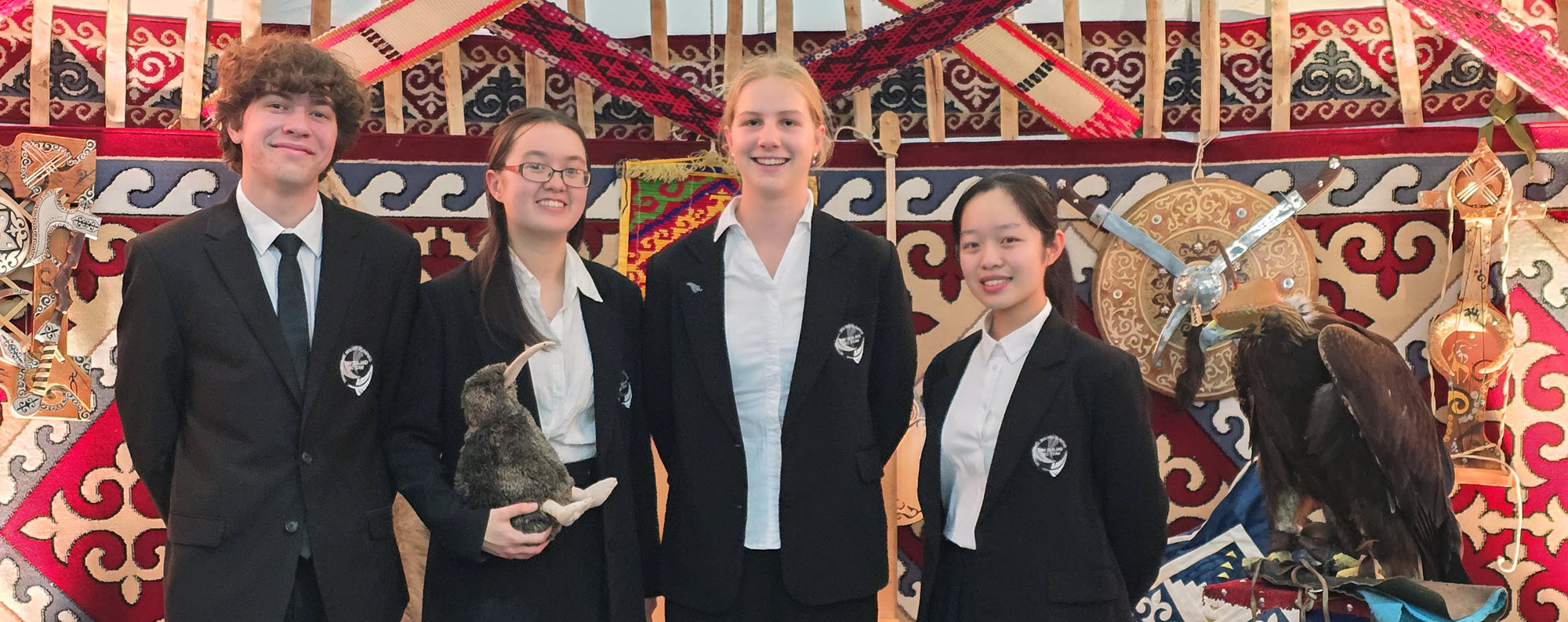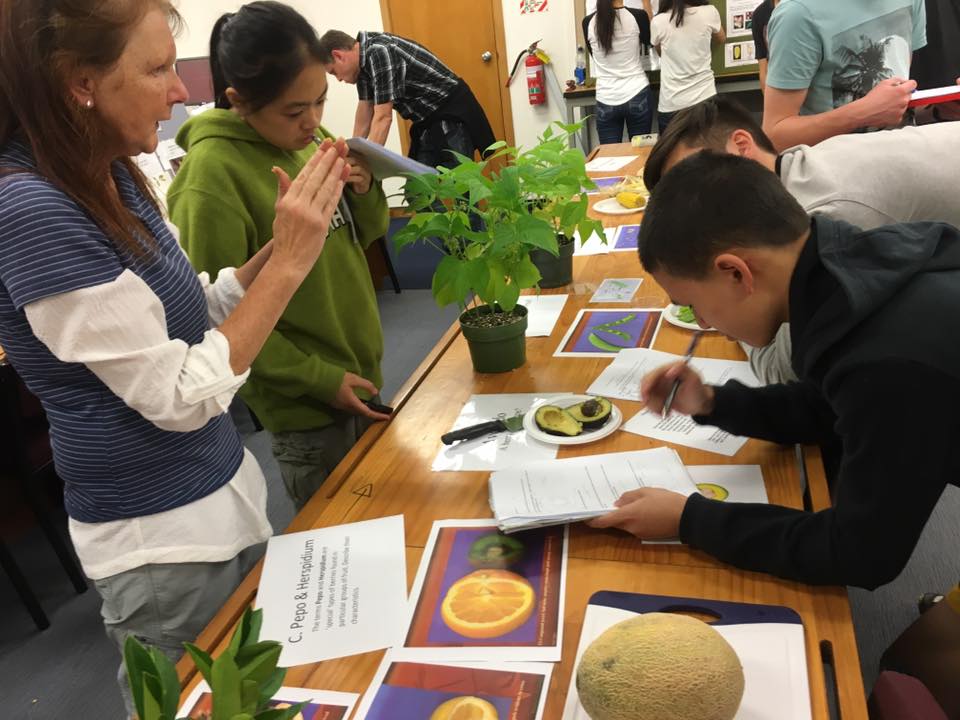
At the beginning of the Training Camp, the 19 students that had been selected from a cohort of several hundred congregated at Auckland Airport. Having travelled far and wide from all over the country, everyone had their own unique experiences to share and this allowed friendships to flourish quickly. We travelled down to Hamilton, dropped our luggage off at Sonninghill Hostel and launched into stream sampling at Kaniwhaniwha Reserve in Pirongia Forest Park. After learning the ‘kick sampling’ technique, we collected and classified the macroinvertebrates we found in the stream. Each of the macroinvertebrates had a Macroinvertebrate Community Index assigned to it which allowed us to assess the health of the stream. We also used the Shannon-Wiener Diversity Index to compare the species diversity of Kaniwhaniwha Stream with a stream running through the central city Parana Park – obviously, there was a significant difference!
Over the next three days, we studied in the laboratories at Waikato University, accruing a range of skills that would prepare us for the International Biology Olympiad. We began by reviewing how to use the different microscopes available and making biological drawings of four protists – Euglena, Amoeba, Paramecium and Daphnia. Using these organisms, we designed an experiment testing their responses to light. While we had all the microscopes set up, we examined mitosis in garlic root tips by preparing a slide of the actively dividing meristematic cells. From this, we were able to identify the stage of mitosis that each cell was in, although the vast majority were undergoing interphase! In the afternoon, the group learnt how to separate DNA fragments using agarose gel electrophoresis, a very delicate procedure. We also determined the concentration of an unknown blood sample by measuring its light absorbance using a spectrophotometer and comparing it to samples of a known concentration that we had prepared using serial dilutions – all in a day’s work!
The focus shifted to plants on the second day at Waikato with a visit to the plant lab where there was a comprehensive display of the plant kingdom. Pretty flowers and leaves aside, it was a fantastic opportunity to examine live samples of some very rare plant groups. We took samples of both monocot and dicot stems to stain and observe under a microscope. Then, we learnt about writing floral formulae (just like how a chemist uses chemical formulae!) and applied these rules to a rose, daisy, cyclamen and grass. Following lunch, we prepared a sheep blood smear and identified the red blood cells and white blood cells. Using more sheep blood, we determined the concentration of red blood cells by using a haemocytometer to manually count. Afterwards, each student prepared their own bacterial colony of Serratia marcesens using aseptic techniques, and stained bacteria to observe under a microscope. The day culminated with a practical investigation into plant transpiration under varying intensities of light and a visit to the fruit lab where we learnt about the types of fruit and even tasted them! Who knew that an avocado is not only a fruit, but even a berry?
Day Three began bright and early with a field trip to the Livestock Improvement Corporation in Hamilton where students were able to observe the collection of semen from male bulls inside an artificial vagina. The bulls would be aroused and attempt to mount the teaser bulls – their semen is collected on the third mount to maximise its concentration. The semen is then stored in huge containers filled with liquid nitrogen to keep it very cold. The focus of the day was on animal dissections which included black tiger prawns, crickets, earthworms, squid and perch. You could imagine how tedious it was to detach cricket mouthparts under a dissecting microscope! We also constructed a dichotomous key for common insect orders using the specimens at the university and designed an experiment testing responses of mealworms to light.
On Thursday, all students fervently applied their skills into the three-hour practical exam which involved a crab dissection, a snail dissection, statistical tests using chi-square, plant stem sectioning, a floral dissection and analysis of red wines using spectrophotometry. Exhausted after the exam, we all travelled back up to Auckland and attended a lecture on Developmental Biology from Dr Fabiana Kubke at the University of Auckland. We learnt about the processes in embryonic development, including how our organs form from a cluster of cells! In the evening, the two lovely university students that accompanied us throughout this trip relayed their experiences at the University of Otago, persuading us to study there ourselves!
To experience another university, we spent the next day at Massey Albany in their Institute of Natural and Mathematical Science. In the morning, we were challenged with the task to distribute one bag of lollies evenly and one bag of lollies randomly. Then, we sampled our respective areas for lollies and collected data for analysis on population density and dispersion. After being introduced to different statistical models, we decided to fit our data to a Poisson distribution. Later, Dr Daniel Thomas encouraged us to draw our own conclusions on reptile evolution through making drawings of reptile skulls and observing the differences in their mouthparts. Through this exercise, we also learnt about how to interpret phylogeny and the evolution of traits. After dinner, all the students were lucky to attend a symposium at Massey where researchers shared their discoveries and were impressed by the calibre of the questions asked.
On Saturday, we embarked on a field trip to Kawau Island in the Hauraki Gulf with a focus on surveying the blue penguin population. This was a very difficult task since at every single instant, some penguins are found beneath the water surface which others lie on the surface. In addition, the penguins tend to dive underwater and resurface, making it difficult to distinguish between those already counted and those not yet counted. The use of a range finder allowed us to accurately determine how far the penguins were away from us. We were very fortunate to have Professor Dianne Brunton onboard who amazed all the students with her comprehensive knowledge on wildlife. On the island, we stopped at Vivian Bay where there was an extensive beach and rock pools filled with marine organisms. Some of us happened to be at the right place at the right time and even saw a shark! Next stop was Two House Bay, home of the historic Mansion House and a flock of brown weka. We took a short walk to the nearby Ladys Bay where the clay was tinged red by copper ions. Since we were ahead of schedule, we cruised around several other islands and visited Tawharanui Regional Park to discover how their predator-proof fence works and the type of predators that the fence intends to block. The evening provided some respite from a day of field work with relaxation at the Waiwera Hot Pools.
The final session of the camp was a full-day lecture from Professor Brian McArdle who enlightened us all on biostatistics. We covered the basic measures of central tendency and probability before advancing onto the chi-square and student-t tests. His unique style of teaching kept us all awake and attentive as we performed calculations and engaged in discussion on the merits of each statistical test. Although many of us had studied these tests before, Brian was able to explain how each of the formulae were derived which allowed us to understand them significantly better.
On the final morning, students sat the three-hour theory exam which was comprised of 60 sections with four questions in each section. For everyone, it was great to finally give a sigh of relief after eight days of intensive biology study! The students also thanked all the people who made this camp possible including our resident tutors – Dr Sharples, Dr Meikle, Shawn Cooper, Nick Bryant and Pru Casey. With the exchange of phone numbers and sending of Facebook friend requests, we all parted our ways, vowing to stay in touch and maintain these valuable life-long friendships.




